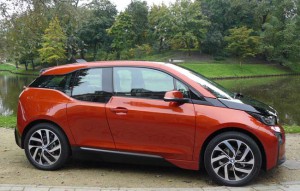2017 Nissan GT-R review: A supercar for the Gran Turismo generation
Few cars achieve the cult following enjoyed by the Nissan GT-R. For the past 30 years, it’s been the car of choice for the most discerning, knowledgeable petrolheads – a Japanese saloon with the technical prowess and performance to compete with exotic supercars triple its price.
While many know Nissan’s turbocharged beast from films such as The Fast and the Furious or the pages of EVO, my first experience of the Nissan GT-R – or Skyline GT-R as it used to be called – came from Gran Turismo on the original PlayStation. It was the car that made going fast and winning races far easier than it should be, and in the following games it became my go-to car – partly because it seemed too fast for its price. And having now driven the 2017 Nissan GT-R, it’s amazing how close to reality Gran Turismo was.
Last week, I drove a 2017 Nissan GT-R around the famous Thruxton race circuit, and it was one of the most advanced, unique and quietly insane driving experiences I’ve ever had. But before I get on to what it’s like to drive, it’s worth explaining what the Nissan GT-R is in 2017. The GT-R I drove is far different from the car I used to peer at in Gran Turismo, because Nissan has continually improved the GT-R over the years, making it more refined and just plain faster with every iteration.
Cutting-edge tech
In 2017, the Nissan GT-R is powered by an incredible, compact engine. Powered by a relatively compact 3.8-litre, 24-valve V6 engine, and augmented by a twin-turbocharger, the GT-R puts out a huge 570Ps at 6,800rpm, and has a 0-62mph of 2.8 seconds. To put that in perspective,that’s the same time as a McLaren P1, a hypercar worth around 11 times the £80,000 Nissan.
This year’s engine squeezes out an extra 20Ps compared to 2015’s car. To do that, Nissan has increased the boost pressure of the unit’s twin-turbocharger, and also introduced a brand-new ignition-timing system, usually seen on the race-ready Nissan NISMO edition of the GT-R. The new system basically improves the timing of ignition, resulting in a cleaner, more powerful stroke.
Efficiency has also been improved by the use of plasma-sprayed bores. As shown in the Vine below, this technology allows for reduced friction between cylinders and other components. The result? Reduced friction, lighter weight, enhanced cooling, superior power output and improved fuel efficiency.
And there’s one other interesting thing about the Nissan’s engine. Despite its high-tech, state-of-the-art nature, it’s not assembled by a machine, but by hand. Every GT-R engine is assembled by one of the Nissan’s five Takumi mastercraftsmen, and to add an even more personal touch, each engine is tested and signed off by its builder.






























